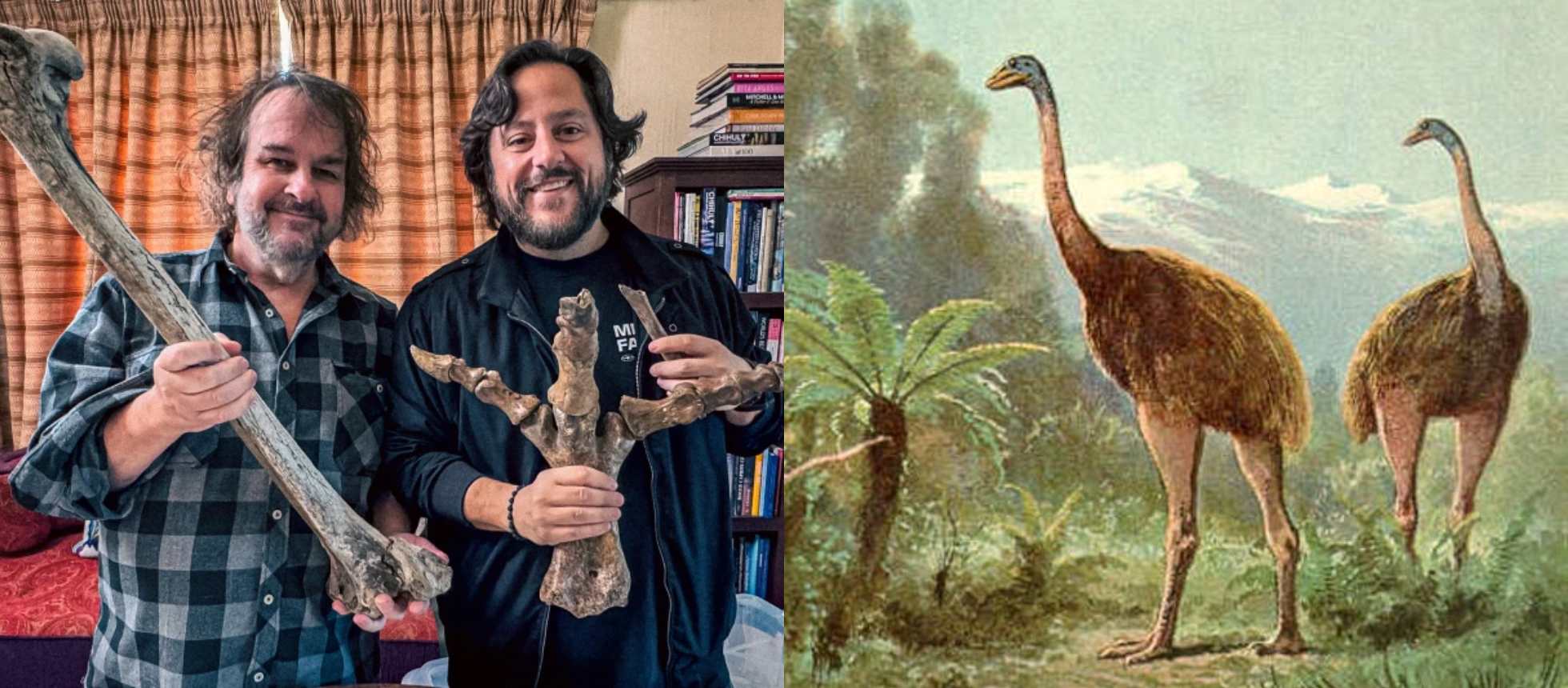The creative mind behind Middle-earth’s most iconic cinematic moments has started on a real-world adventure that could rival any fantasy epic. The director of ‘The Lord of the Rings’ series, Peter Jackson, is now channeling his passion into resurrecting creatures from New Zealand’s ancient past.
Jackson has partnered with Colossal Biosciences, a Texas-based biotech company, to pursue what many would consider the stuff of science fiction. He wants to bring back the Moa, a species of colossal flightless birds that vanished from New Zealand’s landscape 600 years ago. These weren’t ordinary birds by any measure – the largest among the nine Moa species could tower at heights of up to 3.6 (11.8 ft) meters and tip the scales at a staggering 500 pounds (226.7 kg).
The filmmaker’s involvement goes far beyond mere financial backing. Jackson and his wife Fran have assembled an impressive collection of approximately 400 Moa bones, which they’ve already begun sampling for DNA extraction.
“Fran and I have a collection of around 400 Moa bones, and we’ve already sampled them for DNA,” Jackson revealed to IGN. “I see my role over the next year or two as gathering as many more bones as I can. The more bones, the better the genome.”
Colossal Biosciences has joined forces with the Ngāi Tahu Research Centre to tackle the complex scientific challenges involved in de-extinction. The collaboration aims to piece together the genetic puzzle that could potentially restore these magnificent creatures to their native landscape.
For Jackson, this venture represents more than just a scientific curiosity – it’s a labor of love that speaks to his broader environmental philosophy. “I’ve always loved the idea of de-extinction. Particularly, since the science can also have huge benefits with endangered species too,” he explained.
The director’s enthusiasm for the project becomes even more apparent when he describes how it fits into his life alongside his Hollywood commitments. “The movies are my day job, and the Moa are my fun thing I do,” Jackson told, suggesting that this pursuit brings him joy beyond his professional obligations.
This isn’t Colossal Biosciences’ first foray into the world of species revival. The company made headlines earlier this year when Time magazine covered their work on breeding what they claimed was the first ‘dire wolf’ in over 10,000 years. However, that particular achievement has sparked some debate within the scientific community.
The Moa project represents a unique challenge due to the birds’ impressive size and the complexity of their genetics. These ancient giants once roamed New Zealand’s islands as apex herbivores, playing a crucial role in the ecosystem before human arrival led to their extinction. Their disappearance fundamentally altered the landscape, and their potential return could have profound ecological implications.
Jackson’s involvement brings a level of public attention and resources that few conservation projects enjoy. The bone-gathering phase that Jackson has committed to over the coming years will be crucial for the project’s success.
As the project progresses, it will test the boundaries of what’s possible in modern biotechnology while potentially offering insights that could benefit current conservation efforts. The techniques developed for Moa de-extinction could provide new tools for protecting endangered species that still have a chance at survival in the wild.


